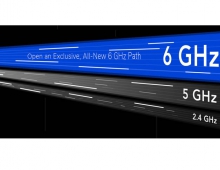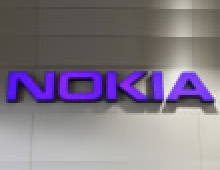
Alcatel-Lucent and BT Achieve 1.4Tb/s Fiber Speeds
Alcatel-Lucent and BT today announced trial speeds of up to 1.4Tb/s with a record spectral efficiency of 5.7 bits per second per Hertz (b/s/Hz)on an existing core fiber connection.
This is believed to be the fastest speed ever achieved in commercial grade hardware in a real-world environment and is equivalent to transmitting 44 uncompressed HD films in a single second.
The field trial, conducted over an existing 410km fiber fiber linklink between the BT Tower in London and BTs Adastral Park research campus in Suffolk, used a new 'flexible grid' infrastructure (Flexgrid) to vary the gaps between transmission channels, usually set at 50Gigahertz (GHz). By increasing the density of channels on the fiber, this approach achieved up to 42.5 percent greater data transmission efficiency compared to todays standard networks.
The trial demonstrated that use of the Flexgrid approach can increase BTs core network capacity using existing optical fibers, potentially reducing the expense of laying more fiber as bandwidth demands grow. This could allow BT to more easily scale its core network capacity.
The trial was conducted through the overlaying of an "Alien Super Channel" comprised of seven 200 Gigabits per second (Gb/s) channels bundled together to provide a combined capacity of 1.4Tb/s. By reducing the spectral spacing between the channels from 50GHz to 35GHz, spectral efficiency is enhanced by almost 43%, the companies said.
The field trial, conducted over an existing 410km fiber fiber linklink between the BT Tower in London and BTs Adastral Park research campus in Suffolk, used a new 'flexible grid' infrastructure (Flexgrid) to vary the gaps between transmission channels, usually set at 50Gigahertz (GHz). By increasing the density of channels on the fiber, this approach achieved up to 42.5 percent greater data transmission efficiency compared to todays standard networks.
The trial demonstrated that use of the Flexgrid approach can increase BTs core network capacity using existing optical fibers, potentially reducing the expense of laying more fiber as bandwidth demands grow. This could allow BT to more easily scale its core network capacity.
The trial was conducted through the overlaying of an "Alien Super Channel" comprised of seven 200 Gigabits per second (Gb/s) channels bundled together to provide a combined capacity of 1.4Tb/s. By reducing the spectral spacing between the channels from 50GHz to 35GHz, spectral efficiency is enhanced by almost 43%, the companies said.



















